ELECTRIC, WITH AN EDGE
In the transformer market, one of the most high-demand products is the three-phase distribution transformer. Due to their scarcity, a lot of consumers tend to go for cheap ones from low-quality manufacturers, which is definitely something you should not do.
This is why, DAELIM, one of the top companies in the world that specializes in three-phase distribution transformers, will provide and share with you their expertise of 15 years for you to be knowledgeable of three-phase distribution transformers.
DAELIM’s professional advice is to get the best-quality three-phase distribution transformer for safety purposes, lesser maintenance, longevity, and overall get the best value out of your money or your company’s money.
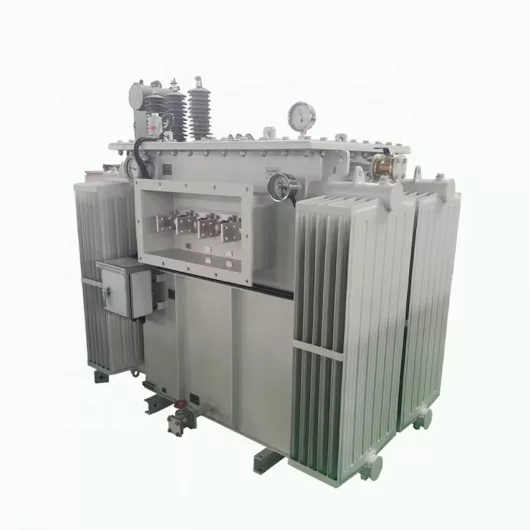
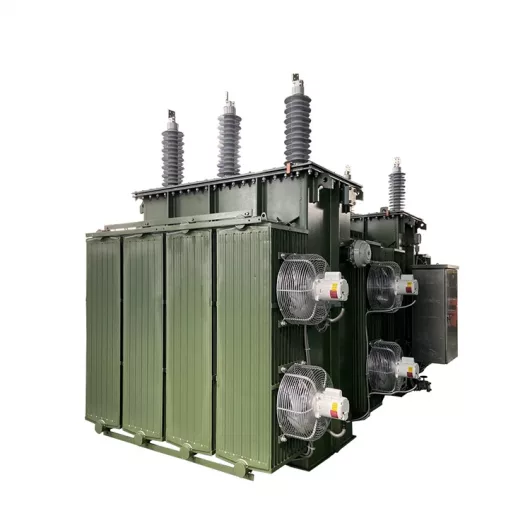


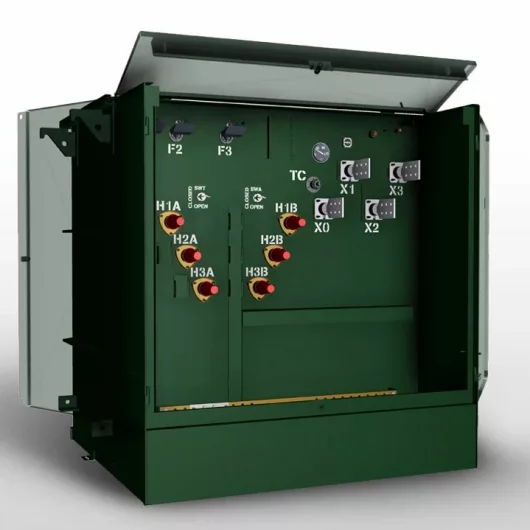
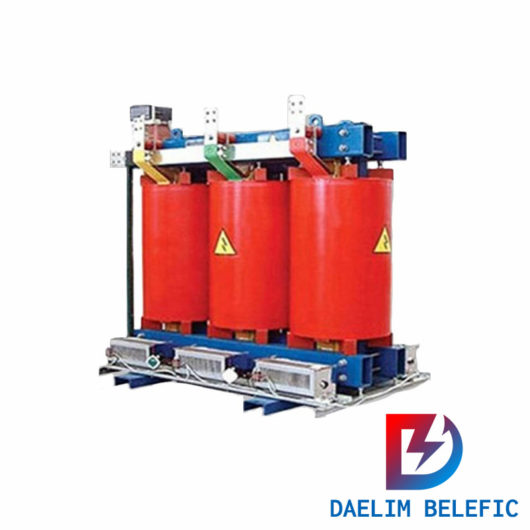
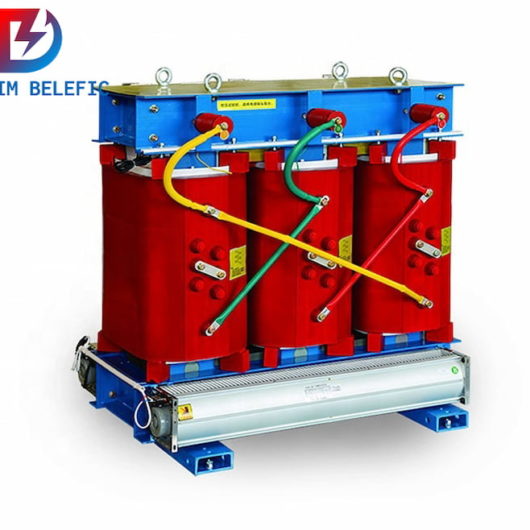
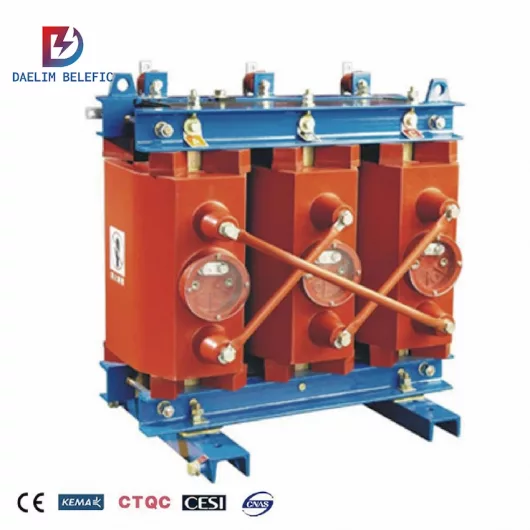
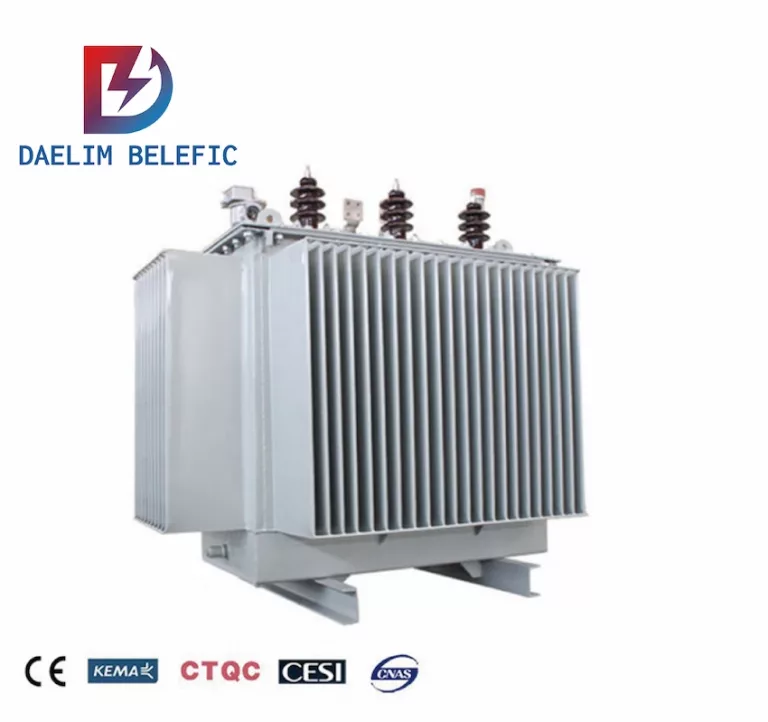
To begin with, you should get to know more about distribution transformers first since the three-phase distribution transformer belongs in this category or classification.
For starters, distribution transformers are also known as service transformers, but in this article, we will use the term “distribution transformer”.
Distribution transformers are primarily used for final voltage transformation purposes in the electric power distribution system. This steps down the voltage for compatible consumer use. This refers to houses and other buildings.
AC power distribution has been made feasible due to the development of the very first transformers back in the early 1880s.
Distribution transformers can also be mounted on a wooden pole, metal pole, or utility pole in general. These are specifically called pole-mounted transformers. They serve the same function and purpose, but their setting is above-ground.
Normally, distribution transformers have ratings that are less than 200 kVA (Kilovolt-ampere). But there are distribution transformers out there that have a much higher rating for further versatility and control.
In terms of energization, distribution transformers are typically energized the whole day, even if they do not carry any load. The purpose of this it reduces iron losses, which is one of their essential functions.
However, distribution transformers are also known to not operate at full loads, this is because their design was built to be efficient at lower loads only. This means that to utilize its efficiency, voltage regulation should be kept at a minimum only.
This type of transformer usually has a magnetic core that is composed of laminations of sheet silicon steel or also known as transformer steel. These are stacked and glued together with resin, steel straps, etc. The primary and secondary winding is also wrapped together with this.
There are different types of core construction or formations for distribution transformers, but all of them have one thing in common, which is their capability of reducing core losses. This also promotes good health to the transformer’s utility grids.
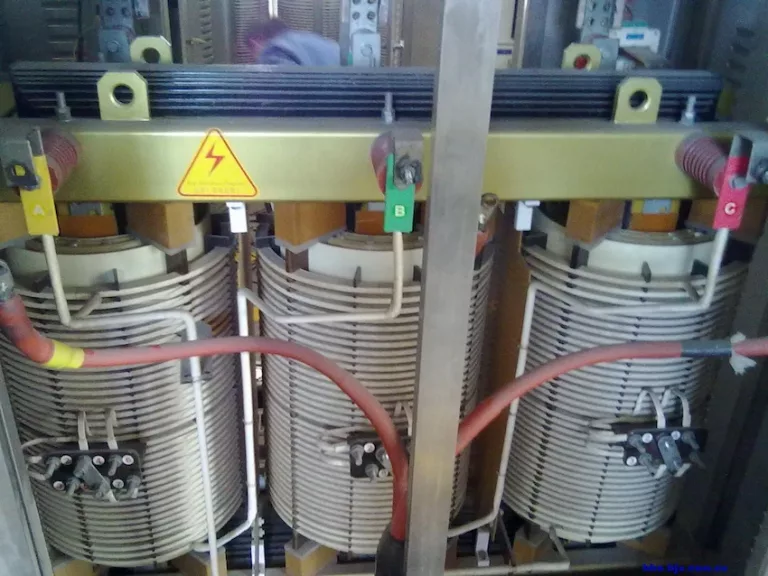
When it comes to core losses, these usually occur because of two reasons, it could either be due to eddy currents or hysteresis losses on the steel. If the transformer makes use of silicon steel, you can expect that it has a low hysteresis loss.
The laminated design prevents eddy currents from passing in the core, this dissipates power to the resistance of the transformer’s steel.
This is also one of the contributors to the high efficiency of distribution transformers (90%-99%).
When it comes to the manufacturing of a lot of transformers that are in a standard design, the setting of this will usually lead to C-shaped cores. This is because it is much easier to manufacture and economic as well.
Primary coils are usually wounds from enamel. It could either be copper or aluminum, the high current, low voltage secondaries are wounds that are using a thick ribbon of any of the aforementioned materials.
In terms of the resin-impregnated paper, these are used to insulate the windings. The entire assembly will be baked to cure the resin, and later on, submerge it into a powder-coated steel tank that is filled with transformer oil or mineral oil.
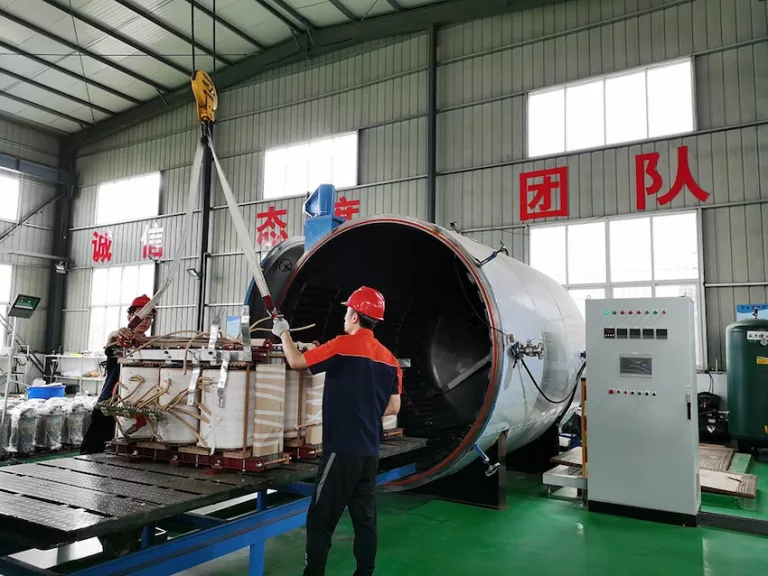
Transformer oil is responsible for cooling down the windings, and this protects the transformer from overheating and moisture attacks. Moisture attacks refer to bits of water floating on the surface of the transformer oil.
Usually, the tank is empty during manufacturing, this is to remove moisture in the tank. Moisture can cause arcing, which is definitely something you should avoid.
However, not all distribution transformers are suitable for indoor placements. Distribution transformers that are suitable for indoors are usually filled PCB liquid or polychlorinated biphenyl.
This chemical is not safe for the public, even animals can have adverse effects from this chemical. PCB is a highly discouraged chemical in the transformer industry and is mostly banned in a lot of countries.
4 Methods of Transformer Drying Treatment
Nowadays, there are fire-resistant liquids that are used for liquid-filled transformers. These are used to place make indoor transformer settings possible without posing any threat to the people around its surroundings.
Alternatives such as vegetable oils have been experimented with as well, but so far, no other type of oil can replace the effectiveness of transformer oil.
Depending on the manufacturer, some manufacturers include accessories such as surge arrestors or protective fuse-links for safety purposes. Some transformers have these components mounted as well, but they are separately mounted outside the tank.
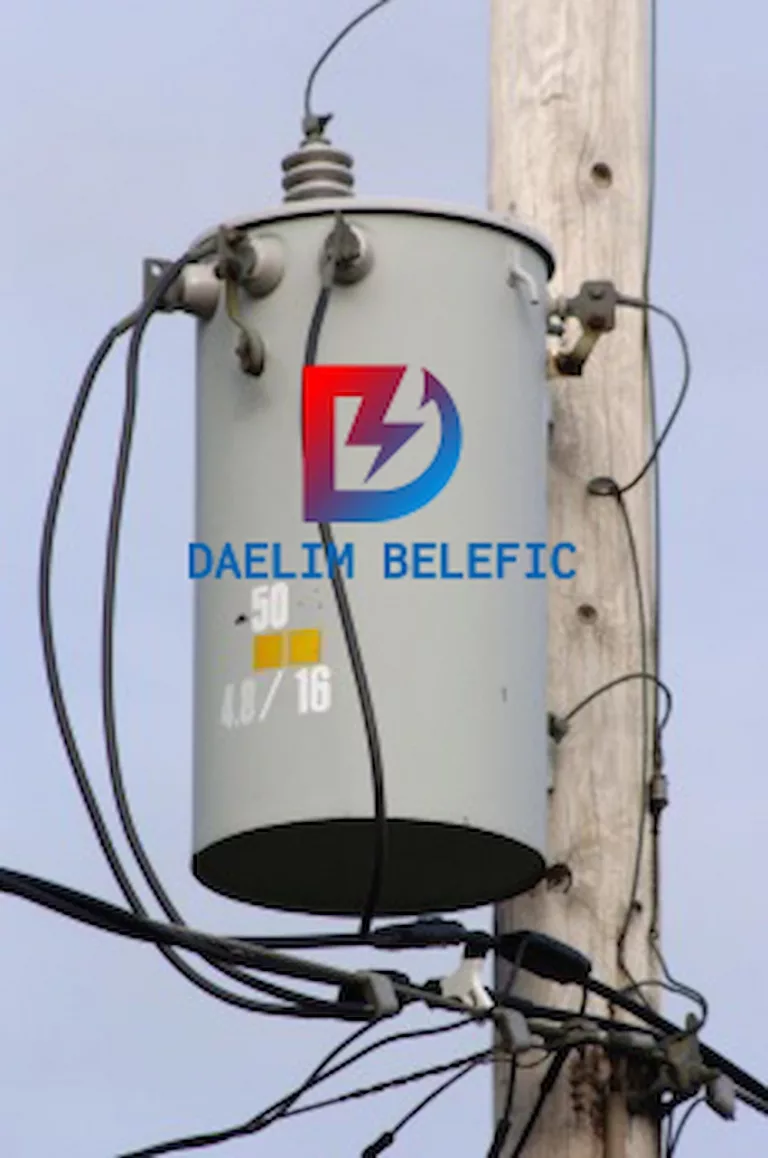
Pole transformers and pad-mount transformers are basically the same when it comes to converting high voltages of the above-ground or underground distribution lines to lower voltages inside buildings.
Primary distribution lines make us of the three-phase system. This is why the main distribution lines consist of three worse and a neutral. However, the neutral is only optional. When it comes to the North Americal System, you would usually encounter single-phase transformers connecting to only one phase wire.
The primary is responsible for providing power to standard distribution voltages. The ratings of this can range from 2.2 kV to 35 kV, but this depends on the local distribution practice, as well as the distribution standards.
Distribution transformers including three-phase distribution transformers can usually be found at power plants and service drops. You would see lines or wires connected to a utility pole or underground lines to houses and other buildings.
three-phase distribution transformers are commonly used in supplying power to buildings outside the vicinity, and even at long distances.
One of the applications of the power supply is the overhead wire of railways that is supported with alternating current or better known as AC. In this certain situation, single-phase transformers are more suitable for this.
You would be surprised to know that a lot of houses can be powered by one distribution transformer, although it varies, even low rating distribution transformers can supply power of up to 50 houses.
For rural distributions, it may require one transformer per consumer but this heavily depends on how much electricity the consumer needs.
Similar to large commercial buildings, even a single building would need multiple distribution transformers. Urban areas could usually have their primary distribution lines underground. These transformers are usually locked in metal enclosures for safety purposes from outside elements that could possibly disturb the operation of the transformer.
A lot of buildings have electric services provided at primary distribution voltages, and these building usually have their own transformers. Their purpose is usually for stepping down voltages (decreasing).
Aside from urban and rural areas, distribution transformers can also be commonly found in collector networks. The best examples of this are wind farms. Their main function in collector networks is to increase or step-up power for each utility to connect to a substation that is very far away.
DAELIM has included this section for you to determine and know what are the similarities, differences, and unique features of the two.
Single-phase distribution transformers or single-phase power systems are used with the help of power lines. There is only one winding for each; one primary winding and one secondary winding.
These are required to achieve voltage transformation. Single-phase transformers make use of these windings to transform the voltage, and they come in different variants as well, that have different functions, power, mounting agents, taps, kVA rating, and many more.
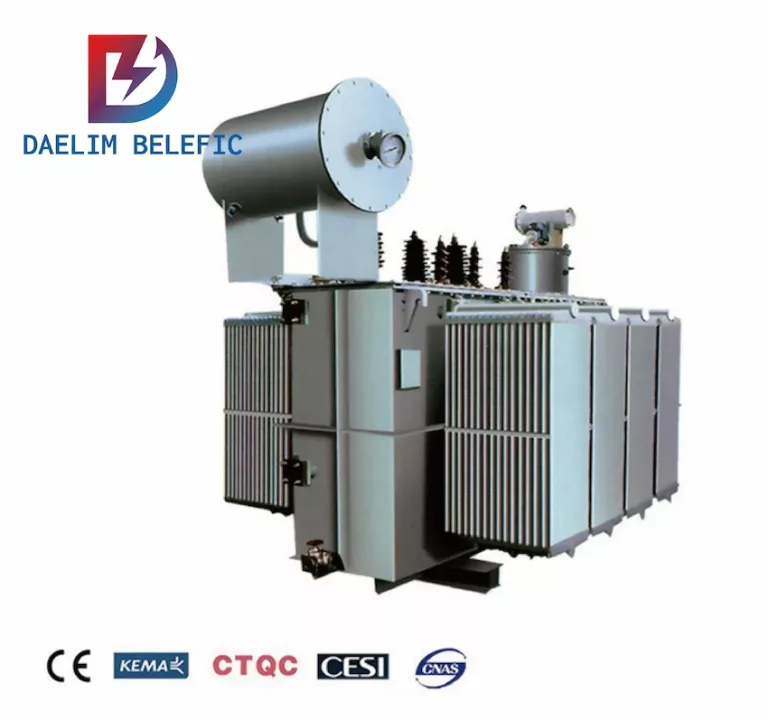
These are commonly labeled as 240 or 480 VAC primary and 120 or 240 VAC secondary. Three-phase distribution transformers simply overpower single-phase distribution transformers. However, there are suitable applications for each transformer.
There might be cases that single-phase transformers are more appropriate, not three-phase distribution transformers, or vice versa.
For three-phase distribution transformers, the generated power will then be sent out to three different lines, this is why it is called “three-phase power.”
Connection Mode of Working Winding of Three-phase Transformer
However, for three-phase distribution transformers to work, you must have at least three winding or coils that are connected to the right order to match or connect with the right incoming voltage.
Afterward, it then transforms the new voltage to the right or appropriate voltage level that is needed.
The supply ability of single-transformers is quite limited compared to the capability of three-phase transformers.
200 Set/Sets per Month 10KVA / 15KVA / 25KVA / 37.5KVA oil-immersed single phase transformer
In terms of its packaging, it does have the upper hand since it is lighter.
Below are DAELIM’s best-selling three-phase distribution transformers. If you have any questions or concerns, do not hesitate to contact DAELIM’s team of professionals for immediate accommodation.
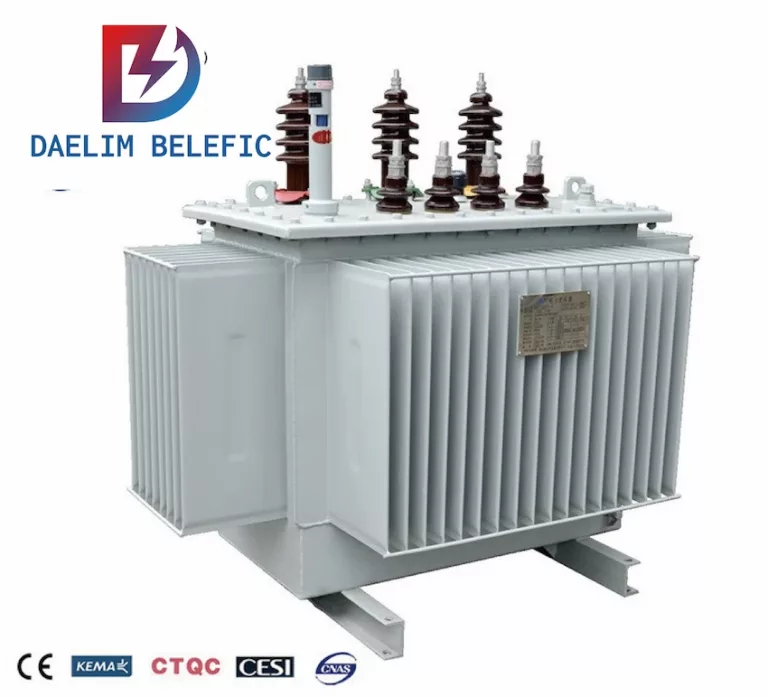
The DAELIM 10KV Oil-Immersed distribution transformer is considered to be one of the most important electrical devices in the distribution network and power supply. Moreover, they are commonly used in industrial and mining applications since they can fit into small spaces.
Aside from that, unlike other transformers – it is less noisy with a strong overload capacity. It has two variants as well, namely; hermetically sealed-type and conservator type.
This transformer can be commonly found in power plants, mining sites, laboratories, agriculture applications, and many more.
Competitive price oil-immersed 2500kva amorph transformer 6 kV.
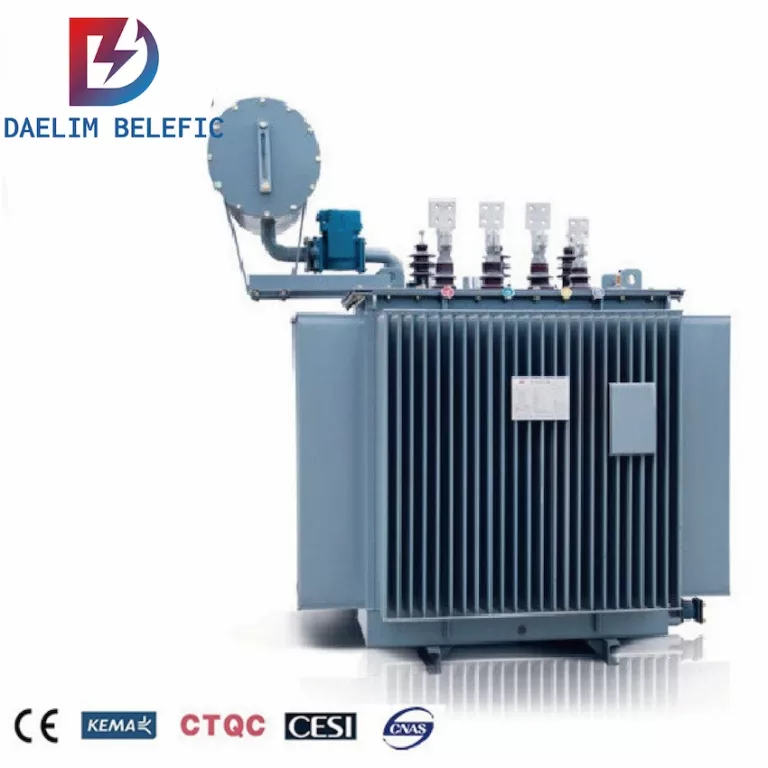
Aside from its higher kilovolt-ampere rating, the DAELIM 20KV Three-Phase Oil-Immersed Distribution Transformer has more advantages as well,
These are the following advantages it has to offer:
20kv 600kva copper core distribution power transformer price
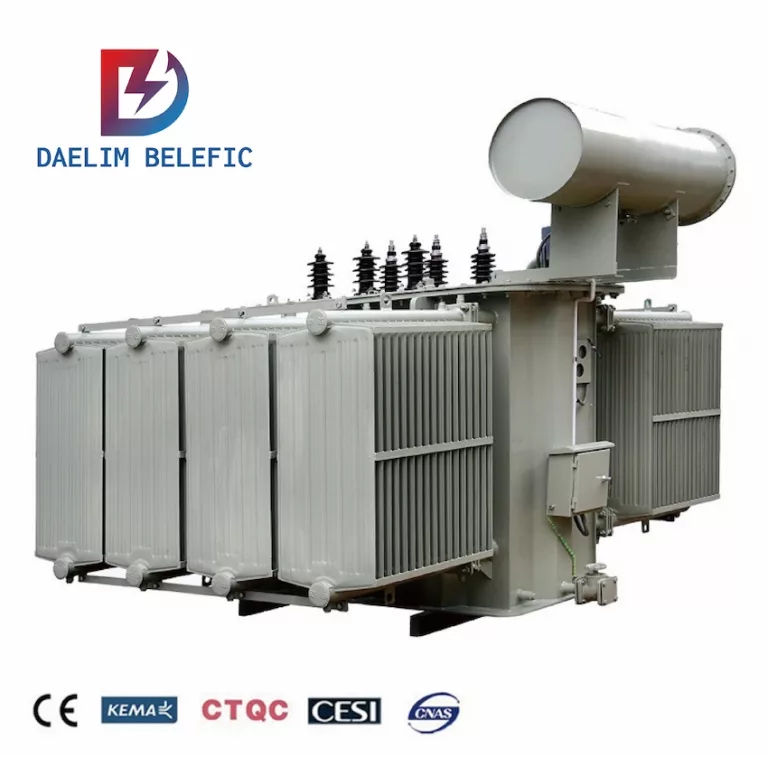
For the highest rated transformer in DAELIM, the 35kV Three-Phase Oil-Immersed Distribution Transformer comply with standards of the ANSI C57. 12.00, GB1097, GB/T6451, and IEC60076.
These transformers offer no-load loss and on-load losses which is great so that you won’t be having to face those issues as you are operating the transformer.
Its core has a good-quality C.R.G.O. core type with high-quality and oxygen-free copper coil, safe operation, minimal design, and is popularly used. This transformer also follows the standards of the IEC IEEE.
Its oil tank is sheet type or expansion, and it does not necessarily need an oil conservator. Its height is also less – for less air contact. This prolongs the longevity and sustainability of the transformer.
Distribution transformers 1000kva power transformer 35kv oil immersed transformer 5000kva power distribution
Three-phase distribution transformers are generally outstanding. For starters, they are much better than single-phase distribution transformers in large projects or uses. For small projects, you don’t have to worry about smaller and less efficient transformers as well because there are smaller versions with fewer kVA ratings of three-phase distribution transformers.
Overall, these are excellent electrical devices that do great in what they are made to do. As mentioned, if you have any questions or concerns, you may contact DAELIM for fast accommodation.
A Three-Phase Distribution Transformer is an important tool that transforms the voltage degree while keeping the very same power level. It’s extensively made use of in power distribution systems.
Three-Phase Distribution Transformers are utilized in bigger installations, while solitary phase circulation transformers are used for smaller tons. The former supplies a more well balanced power supply, which is crucial for heavy machinery and commercial applications.
Key Elements
The essential parts of a Three Phase Transformer consist of the key and additional coils, together with the magnetic core. These elements collaborate to properly transform electrical power.
Operating
A Three-Phase Distribution Transformer operates by combining three distinctive single-phase air conditioning resources to develop an unified three-phase result, ensuring a consistent power supply.
These transformers are regularly present in industrial setups, renewable resource centers, and business frameworks. They are important for transferring power.
Three-Phase Distribution Transformers supply even more efficiency and stability. They can handle bigger loads and are much less at risk to voltage declines.
Placement
For optimum performance, it’s important to have your transformer set up appropriately. It’s recommended that you seek advice from professionals in the field to make sure a risk-free and exact placement.
Upkeep
Routine upkeep of a Three Phase Transformer is important for durability and efficiency. Set up inspections and checks can avoid possible concerns.
Expenses
Though these transformers may cost more in advance, their long-lasting benefits in regards to performance and robust efficiency can warrant the investment.
Having knowledge concerning just how Three-Phase Distribution Transformers job, their benefits, and where they can be utilized is critical for choosing the ideal item for specific needs.
The three-phase transformer’s complex architecture is very carefully crafted to maximize efficiency and reliability. It is made up of layers of wire coils, a strong magnetic core, and protective insulation.
Windings Design
Windings in a Three-Phase Distribution Transformer are carefully wound to lessen losses. Top notch materials are used to make sure conductivity and lower heating.
Magnetic Core
The magnetic core is made from materials that support effective magnetic flux. Its layout aids in lessening energy loss and advertising trusted performance.
The transformer’s life expectancy and reliability are boosted by a well-functioning insulation system that prevents electric faults by obstructing the flow of current between the windings and the core.
Air conditioning System
The cooling system is important to keep ideal temperature levels. Oil or air cooling techniques can be utilized, contributing to the transformer’s reliable operation.
Different methods of linking transformers, such as star-star or delta-delta arrangements, can be made use of. These links play a considerable function in affecting the performance, versatility, and effectiveness of the transformer.
The design of the room makes sure that the transformer’s interior parts are shielded from the impacts of the environment, thus ensuring the transformer’s resilience and consistent procedure.
Our dedication to excellence is mirrored in our rigorous adherence to internationally acknowledged requirements, such as ANSI and IEEE, during every stage of transformer manufacturing. This makes sure that our end product surpasses expectations and fulfills the highest quality criteria.
Combination with Modern Technology
Modern innovations like sensing units and monitoring systems can be incorporated to observe performance, find problems early, and preserve ideal performance.
The building and construction of a three phase transformer is a precise procedure that requires focus to information. The combination of quality materials, layout, and technology warranties efficiency and reliability.
Three-Phase Distribution Transformers are available in different kinds, each offering various applications. Comprehending these types aids in choosing the best transformer.
Core Type
Core kind transformers are preferred for their robust design. They appropriate for industrial applications where reliability and effectiveness are paramount.
Transformers with a shell-type layout offer improved cooling capacities, making them optimal for use in constrained areas where sturdy efficiency is needed.
Autotransformers
Autotransformers are made use of where voltage variant is marginal. They are lighter and a lot more economical yet less versatile than other kinds.
High-Voltage Transformers
High-voltage transformers are specifically crafted for efficient power transmission over long distances. They work as essential tools worldwide of power circulation, ensuring that power reaches its destination safely and efficiently.
Distribution Transformers
Circulation transformers, including pole-mounted or pad-mounted, distribute electrical energy to end-users. They are crucial for the seamless supply of power.
Special Transformers
Special transformers satisfy details needs like oil and gas plants or renewable energy markets. They can be personalized according to unique requirements.
Aspects to take into consideration when selecting a three-phase transformer consist of lots needs, bordering conditions, and economic limitations.
Adherence to regulations is important to make certain security and high quality. Collaboration outside screening facilities is important to meet these standards.
Upkeep and Support
Every type of equipment needs certain maintenance. Proper post-purchase solutions, such as those supplied by Daelim, assure the effective functioning of the devices throughout the service warranty duration.
The varied kinds of three-phase transformer accommodate different market requirements. Choosing the appropriate kind ensures ideal performance and performance.
The procedure of a 3-phase transformer is detailed and exciting, based upon the ideas of electromagnetic induction and the partnerships between phases.
Electromagnetic Induction
This principle goes to the heart of transformer operation. It involves the makeover of voltage levels without changing power, through shared induction between windings.
A three-phase system uses three single-phase windings, normally arranged in a celebrity or delta setup, to provide a stable and well-balanced power supply.
Voltage Conversion
A Three-Phase Distribution Transformer transforms the voltage degrees between its main and secondary windings while making certain a regular flow of power.
Arrangements of 3-phase transformer windings, such as star-star or delta-delta, alter the device’s residential properties, consisting of voltage proportion and phase shift.
Optimizing Efficiency
Performance is vital in the design of our system, and we accomplish this by minimizing losses in every aspect of the tool. To achieve this, we carefully enhance the core material, winding style, and cooling down system to operate in harmony and decrease power waste.
Balancing the tons of a 3 Phase Distribution Transformer power uniformly amongst the stages, stopping overloading and enhancing system stability.
Air Conditioning and Thermal Regulation
Strategies such as oil-immersed or air-cooled systems are utilized to keep the transformer’s temperature level at secure levels, thus ensuring its correct procedure.
Shielding Systems
Precaution are put in place to avoid breakdowns and failures. These consist of breaker and protective relays, which work as a shield versus prospective threats.
Adherence to standards
Adherence to guidelines such as those established by IEEE and ANSI warranties that the transformer’s features line up with specs for safety and security, high quality, and efficiency.
The 3-phase transformer functioning concept encompasses a mix of clinical ideas and engineering methods. Comprehending these concepts guides efficient use and upkeep.
The star-star connection in 3-phase transformer is a common setup. It’s understood for its simplicity, reliability, and particular advantages in certain applications.
Arrangement Details
In this connection, all similar ends of the windings are connected together, forming a star-shaped pattern. It’s often used in medium to huge transformers.
Voltage Features
The star-star arrangement consists of a neutral point, which permits much better handling of uneven lots and aids avoid phase imbalances.
Stage Shift
This link causes no stage change between key and second windings, maintaining uniformity across the system.
Harmonics Handling
Celebrity connections can reduce triple harmonics and relevant problems, providing far better power quality and performance.
Mistake Tolerance
The star-star setup offers enhanced mistake tolerance, permitting one stage to be gotten of service if required without disrupting the entire system.
This application is appropriate for sending and dispersing over cross countries. Its framework enables regular efficiency in a range of scenarios.
Maintenance Considerations
Maintenance for star-star linked transformers is fairly straightforward, owing to the simplicity of the design.
When it comes to picking the right connection type for your application, there are numerous factors to think about. Primarily, you’ll want to consider the details needs of your application, consisting of the relevance of tons equilibrium, voltage levels, and mistake resistance. Just by understanding these needs can you make an educated decision regarding whether a star-star or different link is best for your scenario.
The star-star link in 3-phase transformer offers a balanced, dependable solution for several applications. Its style impacts positively on performance, effectiveness, and maintenance.
The three-phase transformer’s delta-delta connection is a vital arrangement, distinguished by its triangular winding pattern. Its strength and adaptability make it a popular selection for power circulation applications.
Winding Arrangement Specifics
In a delta-delta configuration, each phase winding is connected in a round fashion, creating a triangular or delta-shaped framework. This plan provides distinctive advantages for particular uses.
The delta-delta configuration enables the handling of greater voltage degrees, providing it proper for usage in demanding commercial setups where heavy-duty efficiency is required.
Load Management
This link enables effective administration of irregular loads, ensuring security also when there are variations in exactly how the lots is dispersed.
Phase Shift
Unlike the celebrity connection, delta-delta induces a phase change in between primary and secondary windings. This can be a wanted characteristic in particular scenarios.
Fault Tolerance
Among the major advantages of using the delta-delta connection is its capability to stand up to stage failings. In case one winding stops working, the system is still able to operate.
Harmonics Suppression
Though not as effective as celebrity connections in suppressing three-way harmonics, delta connections still supply appropriate power top quality.
Application Areas
Delta-delta linked transformers are commonly utilized in plants, business structures, and locations where high power stability is needed.
Maintenance Considerations
Delta connections may call for more extensive upkeep because of their intricacy, yet offer higher flexibility out of commission and modifications.
The delta-delta connection of three phase transformer plays a vital role in power circulation, offering resilience, effectiveness, and adaptability to different conditions.
Comparing a 3 Phase Distribution Transformer with a single phase distribution transformer reveals vital differences in layout, functionality, and applications.
Stage Configuration
Three-phase transformers have three sets of windings, whereas single-phase has one. This causes distinctions in power handling and equilibrium.
Performance
Three-phase transformers usually provide greater performance, specifically in high power applications. They disperse power much more evenly across phases.
Load harmonizing is boosted with Three Phase Transformers, decreasing the likelihood of overloads. Single-phase transformers are extra vulnerable to out of balance loads.
Space and Expense
A 3 Phase Distribution Transformer often tends to need more location and can be pricier. Nevertheless, it could be a lot more cost-effective when managing high power situations.
Versatile Voltage Adjustment
Three-phase transformers excel in convenience when it comes to changing voltage levels, making them suitable for taking on elaborate commercial applications with exceptional convenience.
Cooling and Maintenance
Both kinds have distinct air conditioning and upkeep needs. Three-phase often needs even more durable cooling, while single-phase might have simpler maintenance needs.
Application Suitability
Three-phase is suited for commercial, business, and heavy-duty applications, while single-phase is often located in household and light commercial setups.
Regulatory Compliance
Both kinds comply with international requirements like IEEE, ANSI, but the details requirements may vary based on their unique features.
Although three-phase and single-phase transformers both play a vital duty in transforming voltage, they vary significantly in their layouts and uses.
Comprehending the style of a three-phase transformer is vital to understanding how it functions and exactly how to effectively keep it. The various important aspects cooperate with each other to ensure the transformer operates securely and efficiently.
The core in a lot of cases is created utilizing layers of silicon steel, producing a path for magnetic flow. Its framework impacts just how effective, hefty, and costly it is.
Copper or aluminum windings, either primary or additional, are utilized to change voltage degrees during transformation. These elements are covered in insulation to shield users from electrical hazards.
The insulation system, consisted of products that can hold up against warmth and electrical offers to prevent electrical faults by separating windings and windings from the core.
Cooling System
3 stage transformers typically utilize oil or air cooling. The air conditioning system dissipates warm, making sure optimal performance.
Tap Changer
The faucet changer permits adjusting the voltage proportion, accommodating variations in supply or demand.
Safety and security Equipment
The incorporation of safety and security systems such as breaker, integrates, and communicates deals defense against too much lots and malfunctions.
Protecting ports, bushings make sure risk-free and reliable accessories for exterior conductors.
Various kinds of three-phase transformers are developed to satisfy the demands of various applications and markets. Knowing these variations aids in making the appropriate choice.
Core type transformers are optimal for high voltage situations and are typically used in power transmission and large commercial setups.
Shell Type Transformer
Shell kind transformers are utilized in delicate applications requiring noise decrease and prevail in commercial and residential setups.
Car Transformers are commonly used in commercial automation when the voltage improvement proportion is close to one, giving effectiveness in such applications.
Dry-Type Transformer
Dry-type transformers are utilized where fire safety and security is paramount, such as in colleges, health centers, and industrial buildings.
Oil-filled Transformers
Oil-filled transformers are utilized in industries, substations, and nuclear power plant for requiring applications that need solid cooling mechanisms.
A distribution transformer is accountable for the final voltage makeover in circulation networks. This type of transformer is available in both solitary phase and 3 stage variations, each designed to fulfill details requirements in different distribution networks. Whether it’s a solitary stage or three phase distribution transformer, their main feature stays the very same – to change the voltage degree to an appropriate degree for consumption by end-users.
Custom-made Transformers
Transformers can be customized to match certain purposes, such as rectifier transformers for drive systems and furnace transformers for steel manufacturing, to name a few.
Adherence to Regulations
Every category should fulfill the needed requirements set by organizations such as CSA, IEC to guarantee high standards of quality, safety and security, and efficiency.
Three-phase transformers been available in numerous types, each made to satisfy particular demands. Picking the proper type depends upon aspects such as voltage, cooling, effectiveness, and security factors to consider connected to the application.
What are the distinctions and resemblances in between the star-star connection used in 3-phase transformers and the delta-delta link made use of in three-phase transformers?
The distinctions between star-star connection and delta-delta link in 3-phase transformers are evident when considering their configuration, procedure, and relevance for different usages.
Arrangement
Star-Star link signs up with one end of each winding to create a main factor or “star.” Delta-Delta connects each winding in a loop, forming a “delta.”
Delta-Delta arrangements appropriate for high voltage applications, while Star-Star arrangements provide hassle-free control over phase-neutral voltages.
Fault Handling
Delta-Delta is extra durable to winding failings. Star-Star can spot phase-to-ground faults more easily.
Harmonics
Delta-Delta suppresses specific harmonics however is much less reliable than Star-Star in reducing triple harmonics.
Cooling and Efficiency
Both connections might have different cooling requires based upon application. Efficiency is normally similar yet might vary in details circumstances.
Load Balancing
Delta-Delta offers better out of balance lots handling, while Star-Star may need cautious tons preparation.
Delta-Delta causes a phase change, which can be advantageous in certain situations, while Star-Star does not normally cause a stage change.
Application Suitability
Delta-Delta is liked for heavy commercial tons, while Star-Star might be utilized for general circulation and domestic applications.
Maintenance and Expenses
Upkeep needs are similar, but Delta-Delta’s complex style may demand added upkeep. The expense variations are contingent on the design and intended usage.
Star-Star link and Delta-Delta connection in 3-phase transformer offer various needs and applications. Choosing in between them requires understanding their distinct attributes and aligning them with application needs.
The thorough exploration of Three-Phase Distribution Transformer, from its basic principles to different kinds and links, gives beneficial insights into this pivotal equipment in contemporary power systems. Its varied arrangements and specialized design accommodate the complex demands of different fields, from residential areas to hefty industrial plants. Expertise of its functioning concepts, types, connections, and maintenance aspects not only enables informed choices yet additionally cultivates advancement and quality in power distribution. With a keen concentrate on high quality and adherence to international requirements, the three-phase transformer remains to be a cornerstone in the ever-evolving electric landscape.
When you need to find more than just existing transformers, Daelim’s Transformer Service Center can help you design and produce distribution transformers that meet your unique needs.
We have our own factory and a professional team of engineers, which can design and modify application requirements that meet all your conditions.
Download Resource